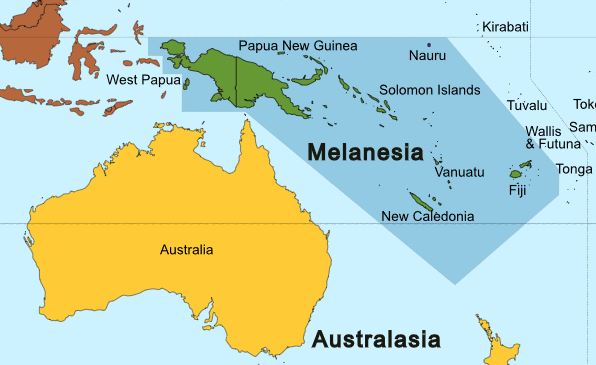|
Adiri (Titan)
Adiri is a large, bright albedo feature on Saturn's moon Titan. It is named after the paradise in Melanesian mythology. It is located to the west of the large, dark region of Shangri-la Shangri-La is a fictional place in Tibet's Kunlun Mountains, Uses the spelling 'Kuen-Lun'. described in the 1933 novel '' Lost Horizon'' by the British author James Hilton. Hilton portrays Shangri-La as a mystical, harmonious valley, gently .... Adiri is a region of high ground and appears to be riddled with drainage channels. The Huygens probe landed on a plain just off the northwest 'coast' of Adiri in 2005. References Surface features of Titan (moon) {{Saturn-stub ... [...More Info...] [...Related Items...] OR: [Wikipedia] [Google] [Baidu] |
Melanesia
Melanesia (, ) is a subregion of Oceania in the southwestern Pacific Ocean. It extends from New Guinea in the west to the Fiji Islands in the east, and includes the Arafura Sea. The region includes the four independent countries of Fiji, Vanuatu, Solomon Islands, and Papua New Guinea. It also includes the West New Guinea, Indonesian part of New Guinea, the French overseas collectivity of New Caledonia, and the Torres Strait Islands. Almost all of the region is in the Southern Hemisphere; only a few small islands that are not politically considered part of Oceania—specifically the northwestern islands of Western New Guinea—lie in the Northern Hemisphere. The name ''Melanesia'' (in French, ''Mélanésie'') was first used in 1832 by French navigator Jules Dumont d'Urville: he coined the terms ''Melanesia'' and ''Micronesia'' to go alongside the pre-existing ''Polynesia'' to designate what he viewed as the three main Ethnicity, ethnic and geographical regions forming the Pacif ... [...More Info...] [...Related Items...] OR: [Wikipedia] [Google] [Baidu] |
Albedo
Albedo ( ; ) is the fraction of sunlight that is Diffuse reflection, diffusely reflected by a body. It is measured on a scale from 0 (corresponding to a black body that absorbs all incident radiation) to 1 (corresponding to a body that reflects all incident radiation). ''Surface albedo'' is defined as the ratio of Radiosity (radiometry), radiosity ''J''e to the irradiance ''E''e (flux per unit area) received by a surface. The proportion reflected is not only determined by properties of the surface itself, but also by the spectral and angular distribution of solar radiation reaching the Earth's surface. These factors vary with atmospheric composition, geographic location, and time (see position of the Sun). While directional-hemispherical reflectance factor is calculated for a single angle of incidence (i.e., for a given position of the Sun), albedo is the directional integration of reflectance over all solar angles in a given period. The temporal resolution may range from seconds ... [...More Info...] [...Related Items...] OR: [Wikipedia] [Google] [Baidu] |
Saturn
Saturn is the sixth planet from the Sun and the second largest in the Solar System, after Jupiter. It is a gas giant, with an average radius of about 9 times that of Earth. It has an eighth the average density of Earth, but is over 95 times more massive. Even though Saturn is almost as big as Jupiter, Saturn has less than a third its mass. Saturn orbits the Sun at a distance of , with an orbital period of 29.45 years. Saturn's interior is thought to be composed of a rocky core, surrounded by a deep layer of metallic hydrogen, an intermediate layer of liquid hydrogen and liquid helium, and an outer layer of gas. Saturn has a pale yellow hue, due to ammonia crystals in its upper atmosphere. An electrical current in the metallic hydrogen layer is thought to give rise to Saturn's planetary magnetic field, which is weaker than Earth's, but has a magnetic moment 580 times that of Earth because of Saturn's greater size. Saturn's magnetic field strength is about a twen ... [...More Info...] [...Related Items...] OR: [Wikipedia] [Google] [Baidu] |
Titan (moon)
Titan is the largest moon of Saturn and the List of Solar System objects by size, second-largest in the Solar System. It is the only Natural satellite, moon known to have an atmosphere denser than the Atmosphere of Earth, Earth's and is the only known object in space—other than Earth—on which there is clear evidence that stable bodies of liquid exist. Titan is one of seven List of gravitationally rounded objects of the Solar System, gravitationally rounded moons of Saturn and the second-most distant among them. Frequently described as a Planetary-mass moon, planet-like moon, Titan is 50% larger in diameter than Earth's Moon and 80% more Mass, massive. It is the second-largest moon in the Solar System after Jupiter's Ganymede (moon), Ganymede and is larger than Mercury (planet), Mercury; yet Titan is only 40% as massive as Mercury, because Mercury is mainly iron and rock while much of Titan is ice, which is less dense. Discovered in 1655 by the Dutch astronomer Christiaan ... [...More Info...] [...Related Items...] OR: [Wikipedia] [Google] [Baidu] |
Huygens Probe
''Huygens'' ( ) was an atmospheric entry robotic space probe that landed successfully on Saturn's moon Titan in 2005. Built and operated by the European Space Agency (ESA), launched by NASA, it was part of the ''Cassini–Huygens'' mission and became the first spacecraft to land on Titan and the farthest landing from Earth a spacecraft has ever made. The probe was named after the 17th-century Dutch astronomer Christiaan Huygens, who discovered Titan in 1655. The combined ''Cassini–Huygens'' spacecraft was launched from Earth on 15 October 1997. ''Huygens'' separated from the ''Cassini'' orbiter on 25 December 2004, and landed on Titan on 14 January 2005 near the Adiri region. ''Huygens''s landing is so far the only one accomplished in the outer Solar System and on a moon other than Earth's. ''Huygens'' touched down on land, although the possibility that it would touch down in an ocean was also taken into account in its design. The probe was designed to gather data for a few ... [...More Info...] [...Related Items...] OR: [Wikipedia] [Google] [Baidu] |




